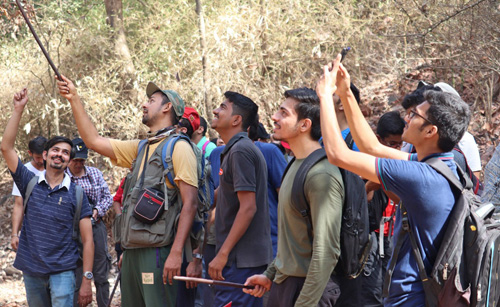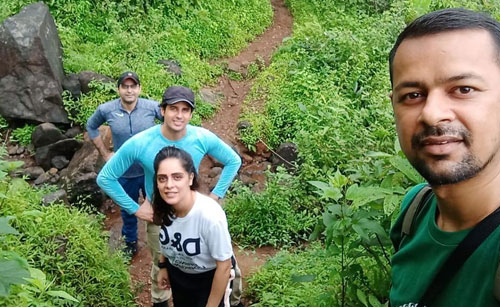Butterflies have fascinated humans since ages with the first references occurring in Egyptian frescoes at Thebes, which are 3,500 years and the word butterfly was first used to describe a butter coloured insect (Butter-butter coloured; Fly- Insect which could fly) and this name is still used to describe all the colourful butterflies. The largest Butterfly in India is the Southern Birdwing which is endemic to Peninsular India with a wingspan of 140–190 mm which is more than that of a house sparrow & the smallest in India is Grass Jewel with a wingspan of 15-17 mm which is the size of the average human thumbnail.
Butterflies are found in every continent except Antarctica as the temperatures are too cold for them survives there. Butterflies along with moths are the only insects with wings to be covered in scales and these scales give butterflies their brilliant colours when light falls on these scales.
Did you know that Adult Butterflies can feed only on liquids? (usually nectar) & cannot chew solids and use a long tube like structure called “Proboscis” for feeding on liquids. Butterflies do not have lungs and breathe through their openings on abdomen called “spiracles” Female butterflies are usually bigger and live longer than male butterflies. Interesting thing about butterflies is that each Butterfly Family selects a particular species of plant/tree and lays eggs only on them and not on any random plant or trees.
Butterflies are cold blooded insects, meaning they cannot regulate their own body temperature and to regulate their body temperature they must depend on the ambient temperature that is the sun’s solar energy. Therefore most butterflies sit in the sun rays with their wings open and this process is called as “Basking”.. The absorption of heat is determined by the colour of the wings. The more the dark the upper surface of the butterfly the more quickly it will absorb the suns energy and will be ready to perform its daily activities. Where-as if the upper surface is light in colour more time will be required for the heat to be absorbed.
But the basking of the butterflies is completely dependent on the sun’s heat energy. If there is a drop in the temperature or the sun is blocked due to cloudy weather or when solar heat falls beneath the levels needed to ensure sufficient heating, butterflies immediately seek shelter. Thus it is the heat which allows the butterflies to become active before sunrise and to continue after dark. Therefore we will find a sudden drop in butterfly sightings in winters and plenty of sightings in pre and post monsoon season due to the excessive heat.
In order to take flight butterflies must warm their flight muscles to a sufficient temperature by storing thermal energy from the sun in their wings which power their flight. First the blood (insects blood is called as “haemolymph”) in the veins gets warmer, then the surface of the wings get warmer and after that it is circulated to the other parts of the body. Then when the body temperature is reached to a sufficient temperature the butterfly is ready to start its daily activities.
Did you know a group of butterflies is called a “swarm,” “rabble,” “kaleidoscope,” or “flutter of butterflies.”
Tooth Mountain Farms is blessed with a variety of trees and flowers which is a natural magnet for butterflies. You may see many of them fluttering around the pool area, or near the open sit out; where bonfires are held or just besides the pond area has it has a good number of nectar plants and trees. Few of the butterflies which you can regularly see here are the Common Grass Yellow butterflies which will be flying at ground level, Common Jezebel flying among trees with its brilliant colours; The bright reddish orange Plain Tiger butterfly impossible to miss due to its colour; the tiny Red Pierrot butterfly hovering near its favourite Kalanchoe plant and if extremely lucky you might see Blue Mormon as well, the 2nd largest butterfly in India and the state Butterfly of Maharashtra!!!! Happy Butterfly Watching!!
















